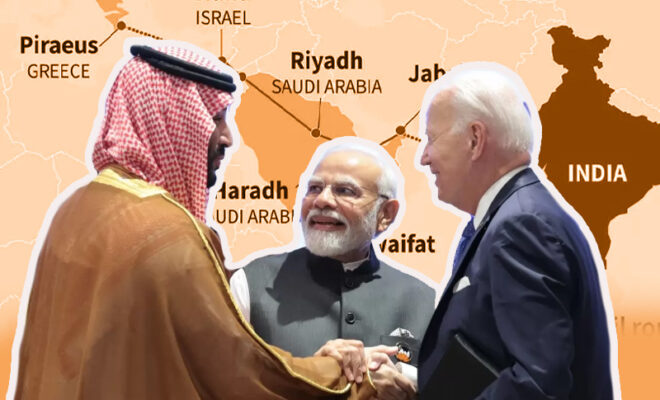Why Did The World Prefer India’s IMEC Corridor Over China’s BRI?

China had proposed its BRI project but several countries dismissed it. But they have agreed with India’s IMEC Corridor proposal. What is the difference?
The IMEC Corridor is a massive infrastructure project proposed by India. Its main goal is to connect India, the Middle East, and Europe through a network of roads, railways, ports, and energy pipelines.
The IMEC Corridor project was announced at the recent G20 Summit in New Delhi. Here are 4 best things about this project:
1. Economic Integration
IMEC aims to promote economic integration between India, the Middle East, and Europe. It’s like building a superhighway for trade, making it easier and more efficient for goods and services to move between these regions and countries.
2. Trade Boost
By improving connectivity, IMEC will likely lead to increased trade among these regions. More trade usually means more economic growth and job opportunities for countries and their people.
3. Sustainability
India has emphasized that the project will be “climate friendly.” This means it’s designed to be environmentally responsible, which is crucial in today’s world.
4. Partnership of Equals
Unlike China’s BRI, IMEC is seen as a partnership where all participating countries benefit. It’s not about one country dominating others but working together for mutual growth.
Why Did The World Oppose China’s BRI Project?
The Belt and Road Initiative, or BRI, is China’s plan to build extensive infrastructure connecting Asia, Africa, and Europe. It includes things like roads, railways, ports, and energy pipelines.
But there were major flaws in this project, which was later realized by several countries. Here are 4 major threats of this project:
1. Debt Concerns
One big issue is the massive loans China provides to participating countries like Pakistan, Sri Lanka and other small countries. Some worry these countries may struggle to repay, leading to economic problems and even loss of control over assets.
2. Lack of Transparency
Critics say that BRI projects often lack transparency. That means it’s not always clear who’s paying for what, and the contracts and environmental impacts aren’t always properly considered.
3. Environmental Threats
Several parts of the BRI projects have been criticized for their environmental impact, including damage to ecosystems and wildlife habitats.
4. Geopolitical Tensions
BRI projects can extend China’s influence, which has led to geopolitical tensions. Countries may worry about China’s growing presence in their regions.
Also Read:- Why Is Saudi Arabia Investing In Sports? Is Sports The New Oil?
How Will IMEC Corridor Benefit The World Unlike BRI?
1. Enhanced Trade
IMEC will make it easier for countries to trade with each other. More trade between these countries will generate more economic growth and job opportunities for IMEC countries & regions.
2. Improved Connectivity
People and goods can move more efficiently between India, the Middle East, and Europe, which can lead to smoother business operations and travel.
3. Economic Growth
The project will likely boost economic growth in the participating regions. When businesses grow, they often hire more people and invest more in their communities.
4. Sustainable Infrastructure
IMEC emphasizes environmentally friendly infrastructure. This is important for the planet and ensures that development is sustainable in the long run.
5. Equal Partnership
IMEC is designed as a partnership where all countries involved benefit, rather than one country dominating the others.
The IMEC is India’s big plan to connect regions for more trade, jobs, and sustainable development. The project aims to promote cooperation among countries. If done right, it could lead to economic growth and better lives for people in these regions.



